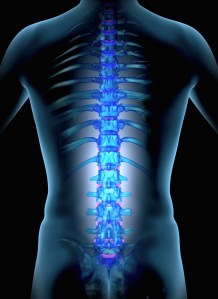
Matthias Kulka/Corbis
Researchers from Harvard, UC San Diego and UC Irvine report that they’ve found a way to regenerate crucial nerve connections following an injury to the spinal cord — at least in mice.
Until now there’s never been a good way to treat paralysis. Once an axon — the long thread-like fiber of a nerve cell — has been damaged, the body cannot repair it again. That means, then, that the brain’s connection to the nerve ending is severed forever. Damage to nerve cells in the spinal cord can cause lifelong loss of control over voluntary movement below the point of injury.
Now, however, the authors of the new study — published online this week in Nature Neuroscience — are reporting a possible solution. They’ve been able to induce substantial regrowth of axons in mice by deleting a protein called PTEN, which regulates a genetic pathway called mTOR to inhibit cell growth. (PTEN is also part of the body’s defense against cancer, suppressing tumor growth.) By deleting PTEN, the body has the ability to re-grow new nervous-system cells — much as it did when first developing in the womb. The result, they claim, is robust regeneration of the injured cells.
The authors write that, to the best of their knowledge, this is the first time anyone has ever induced nerve regeneration of this kind in adult mammals. They now hope their approach might be “widely applicable […] following many types of injuries or traumas in the adult [central nervous system].”

